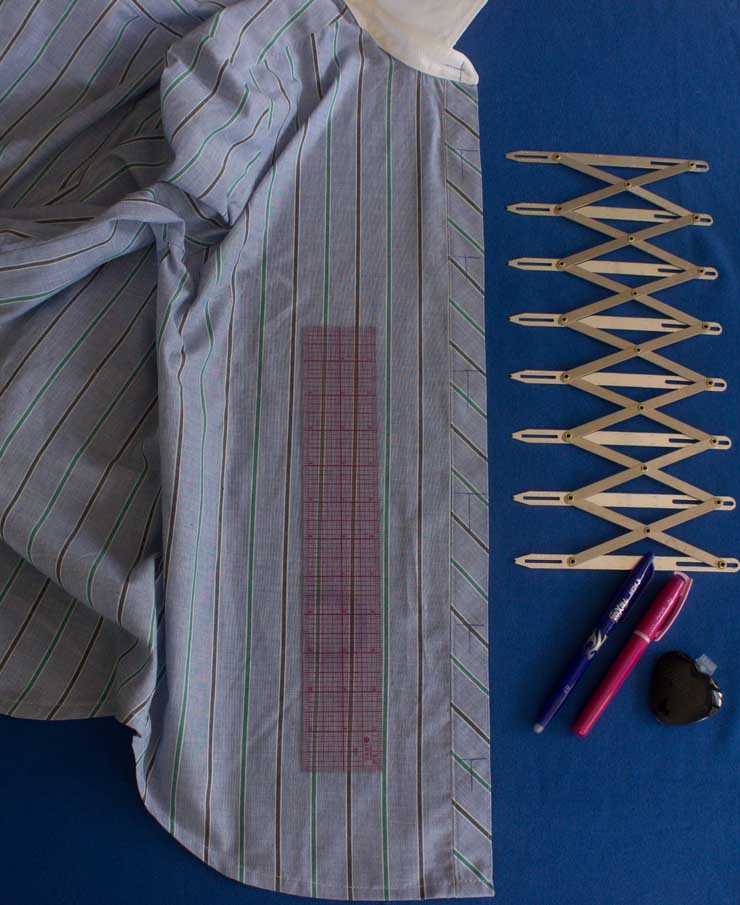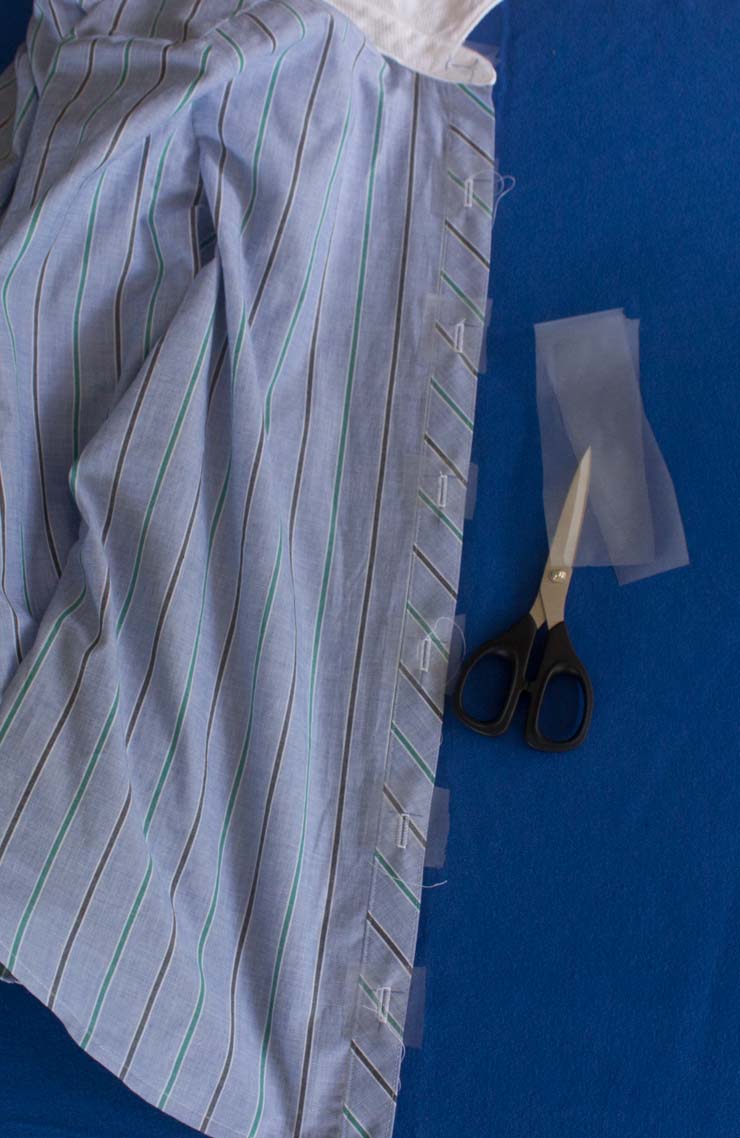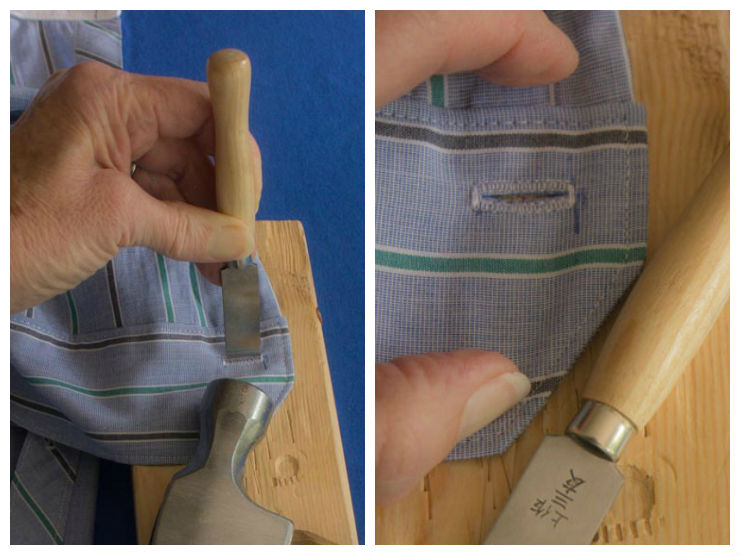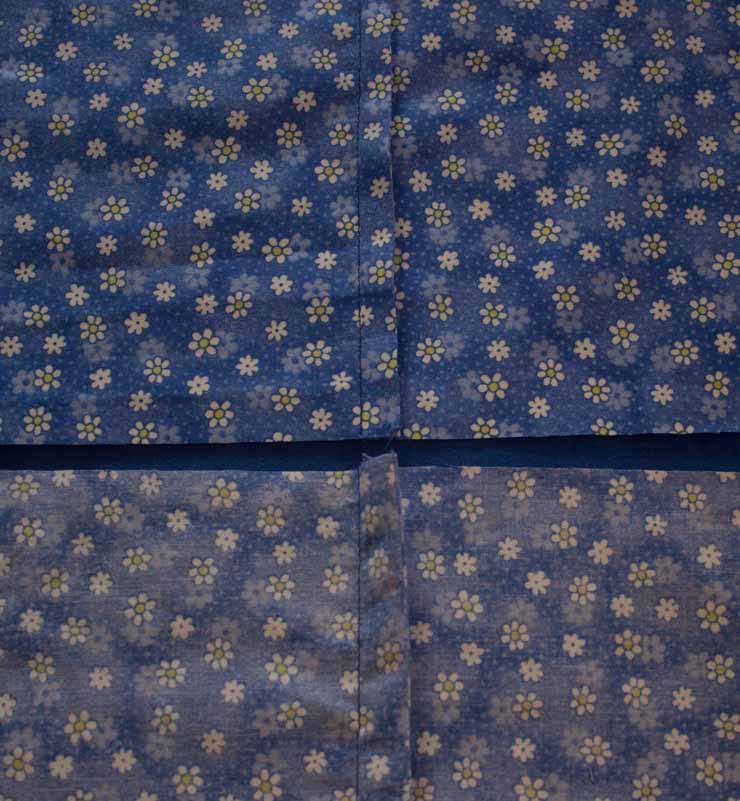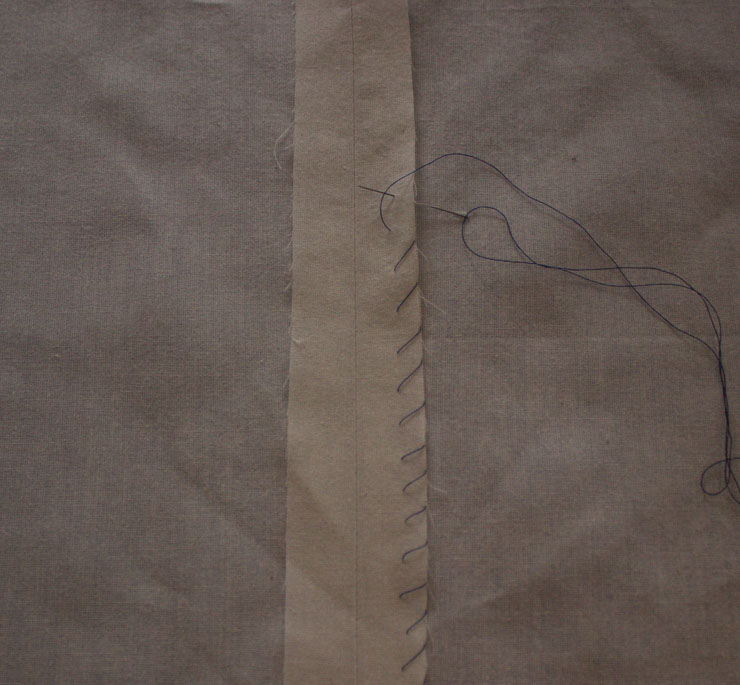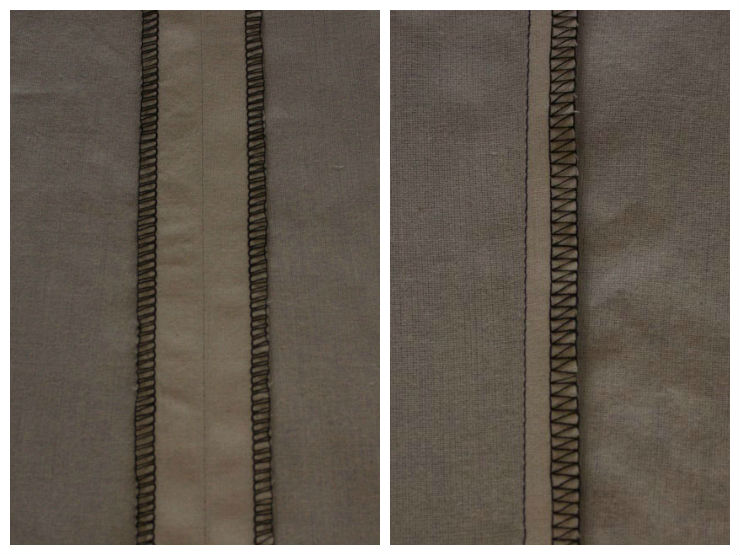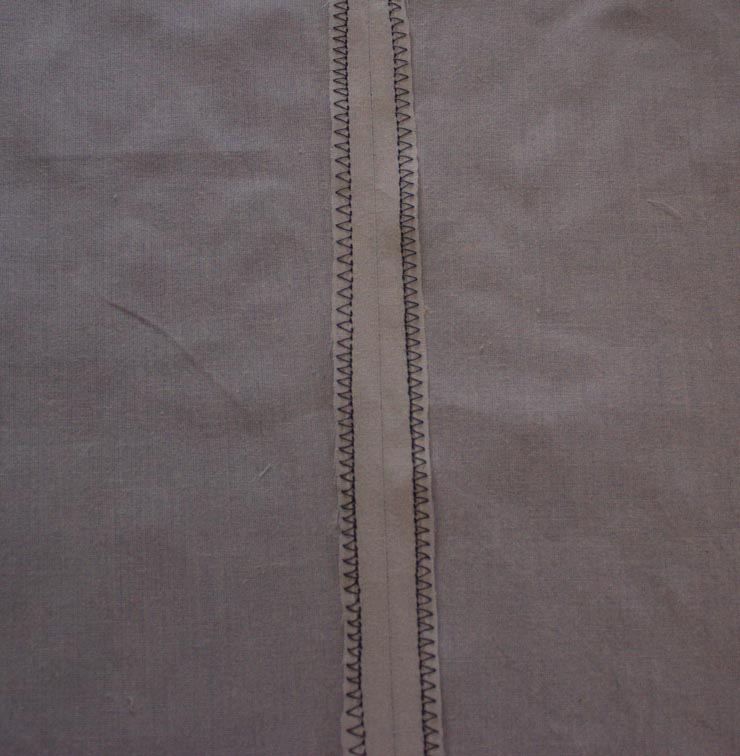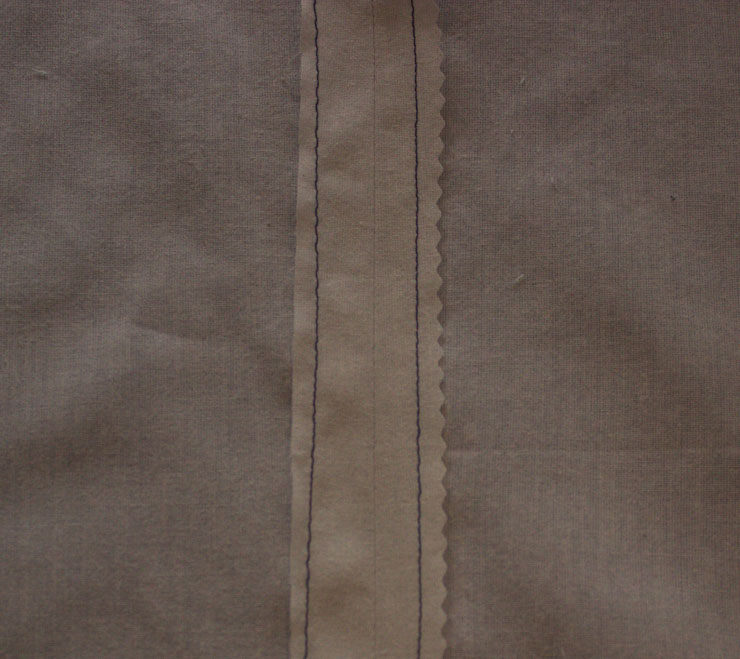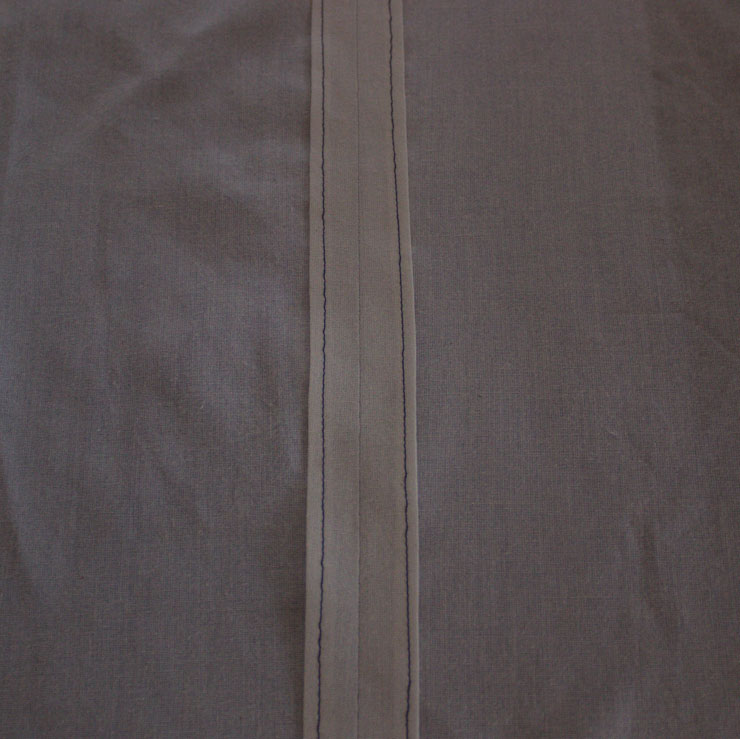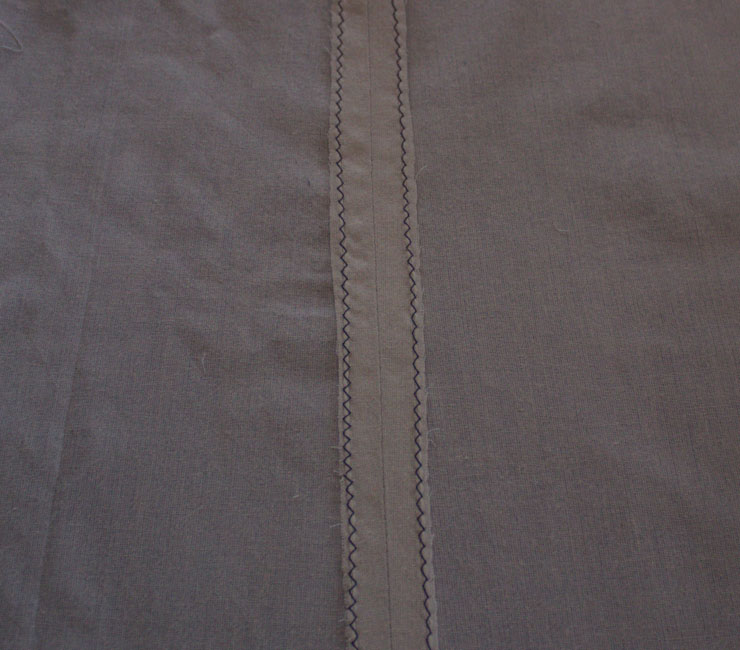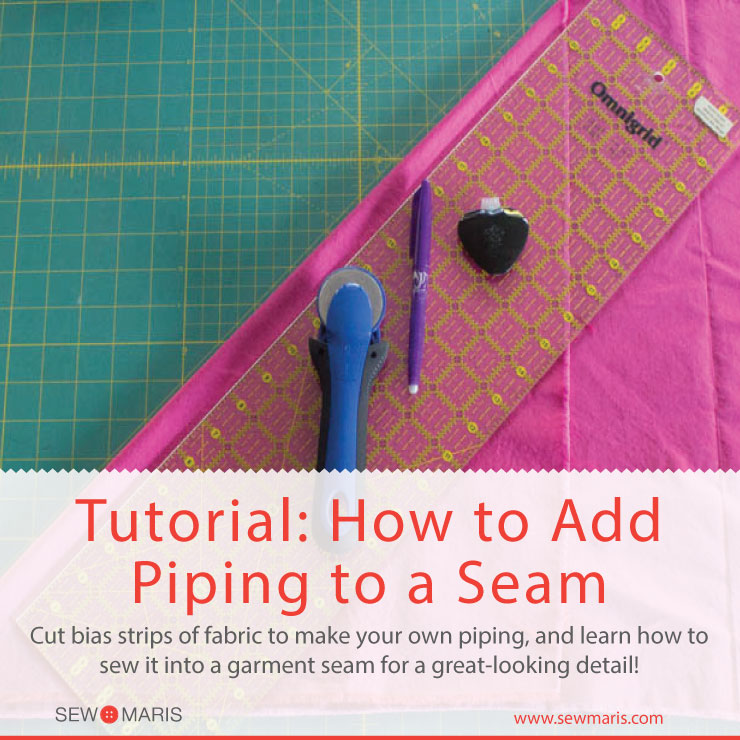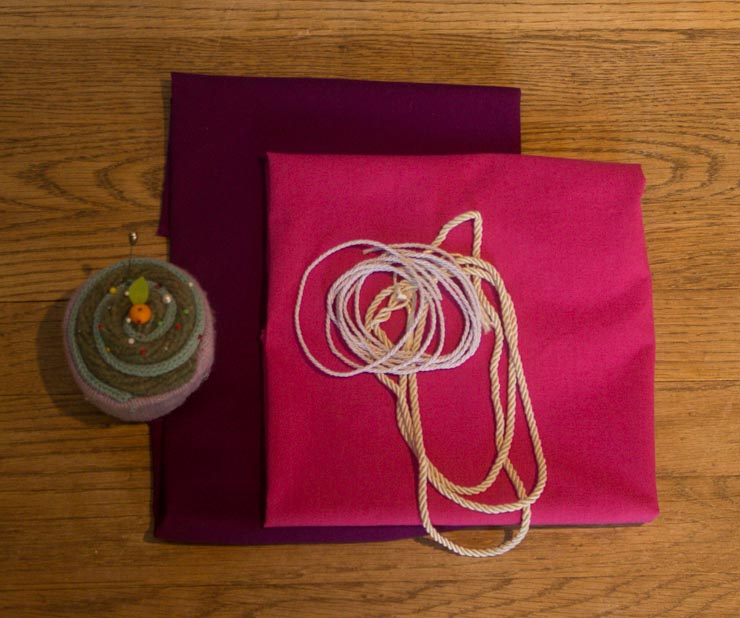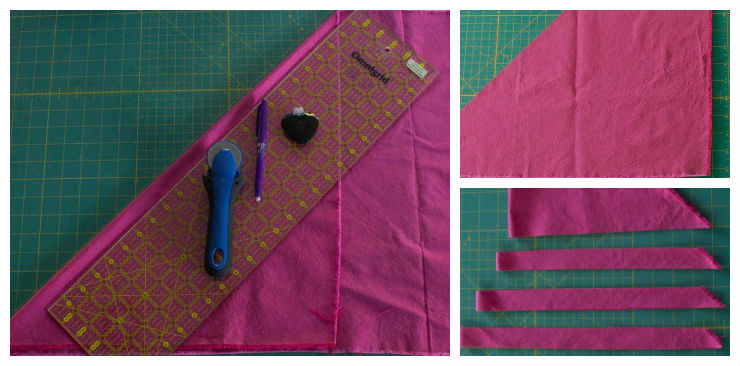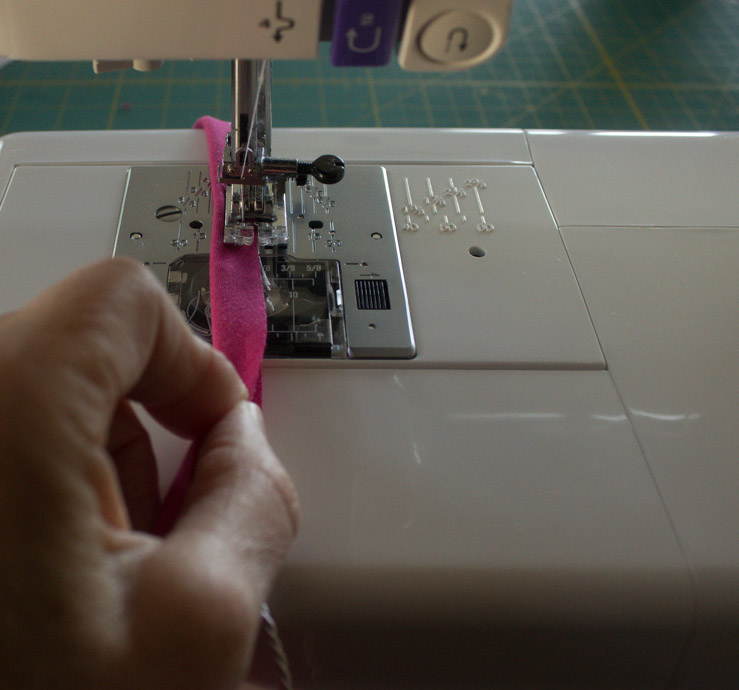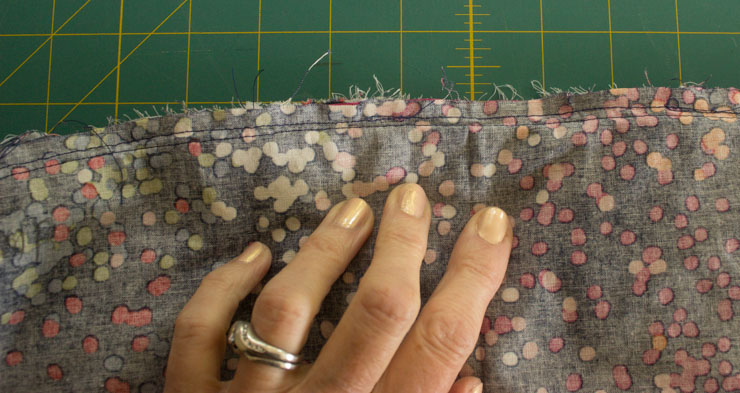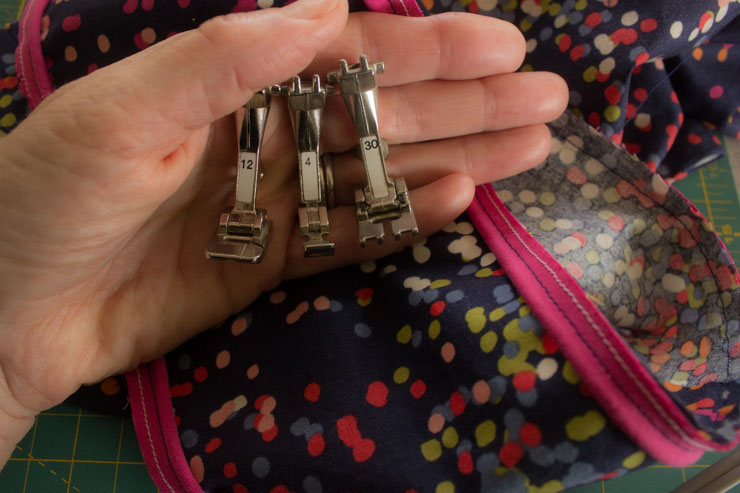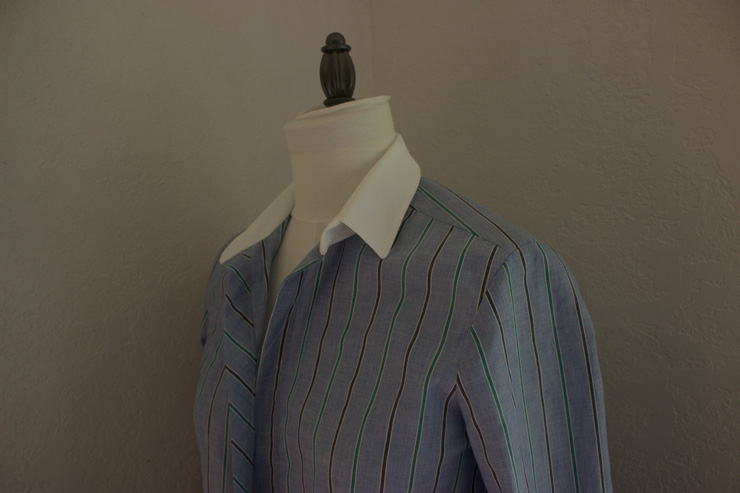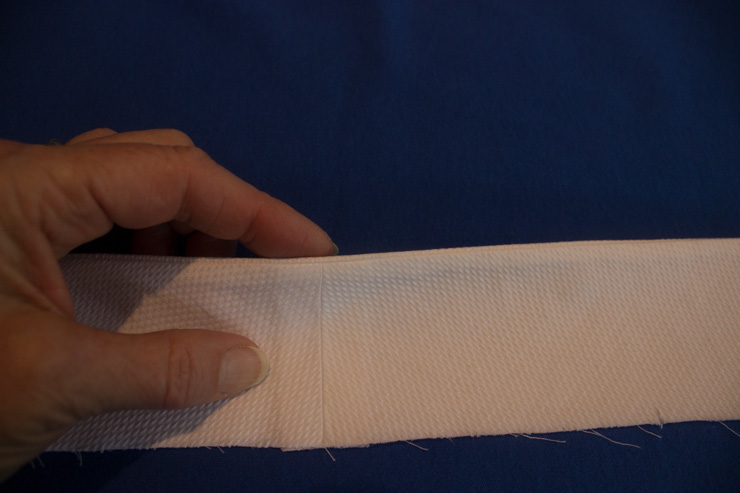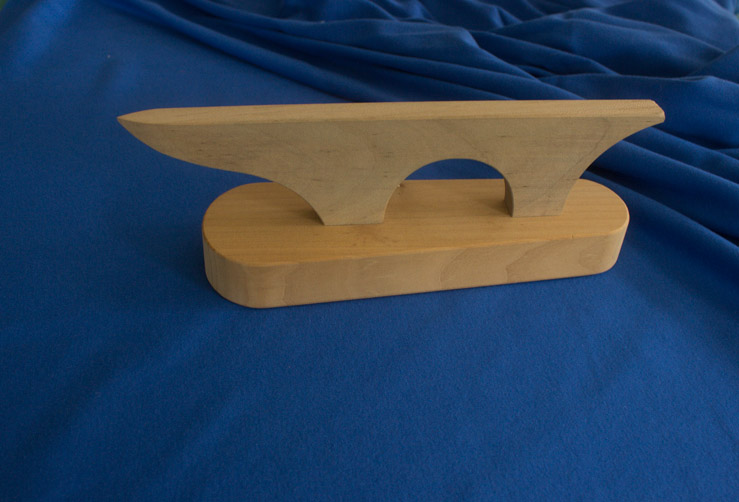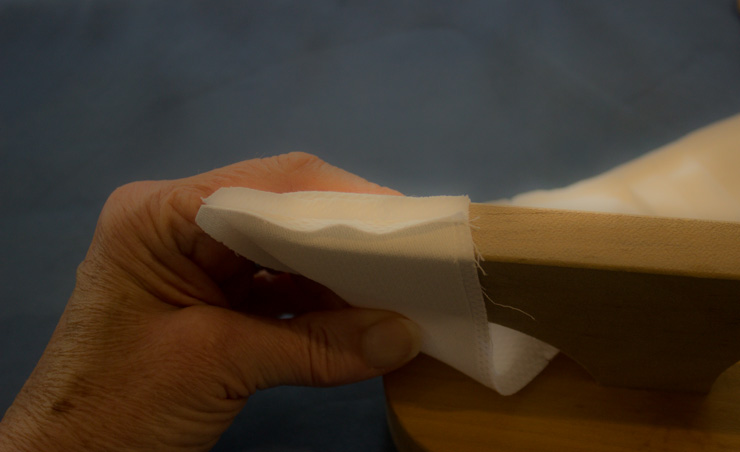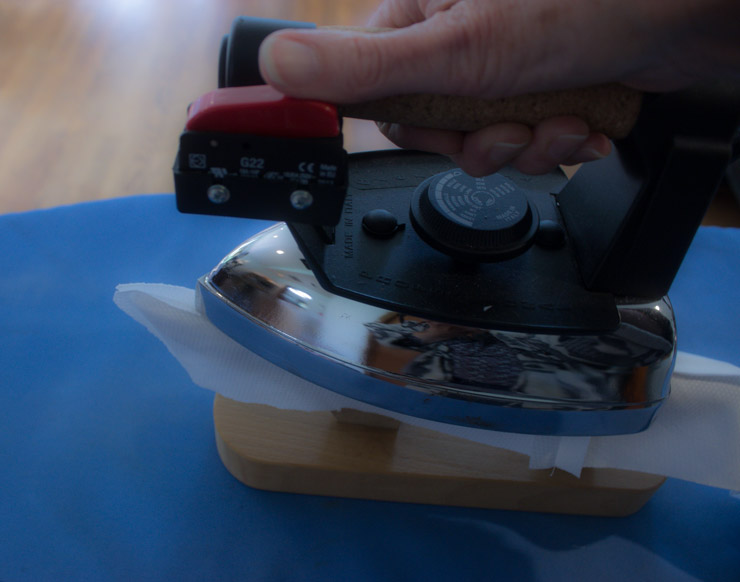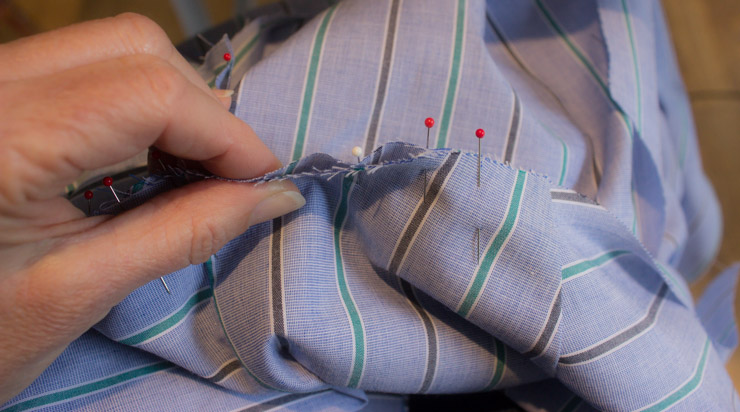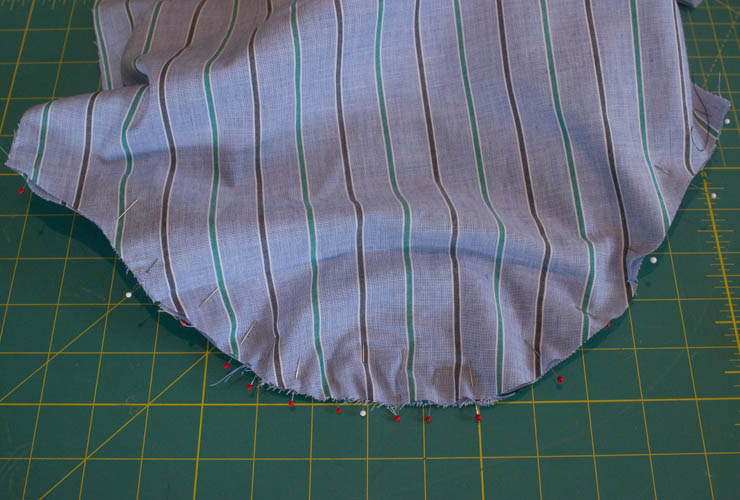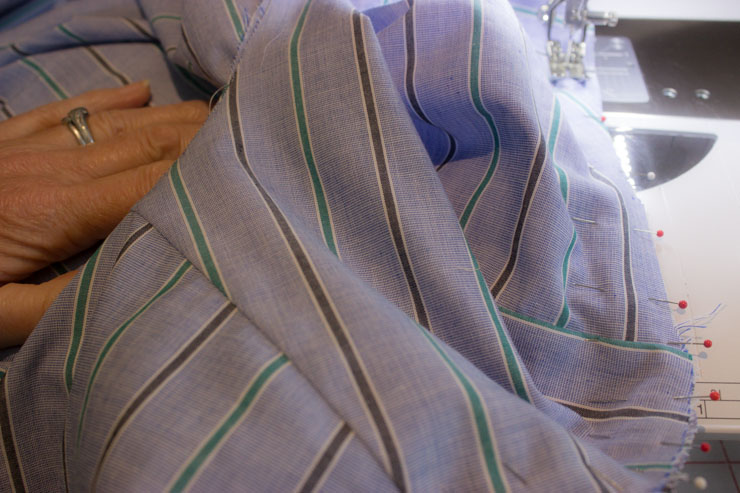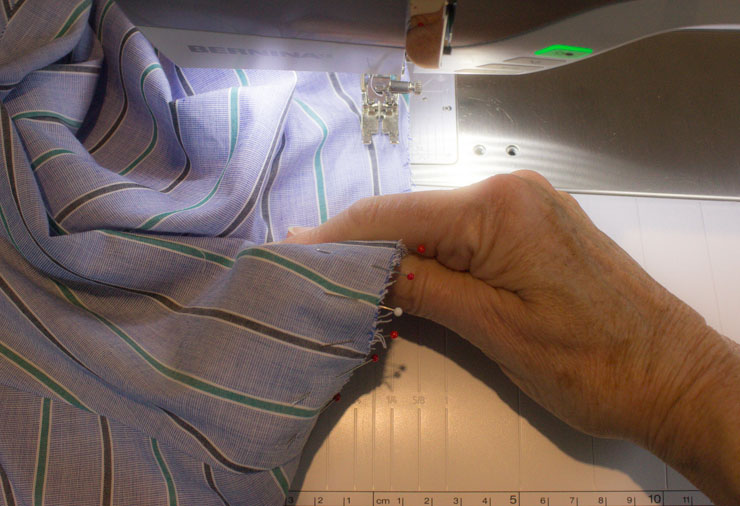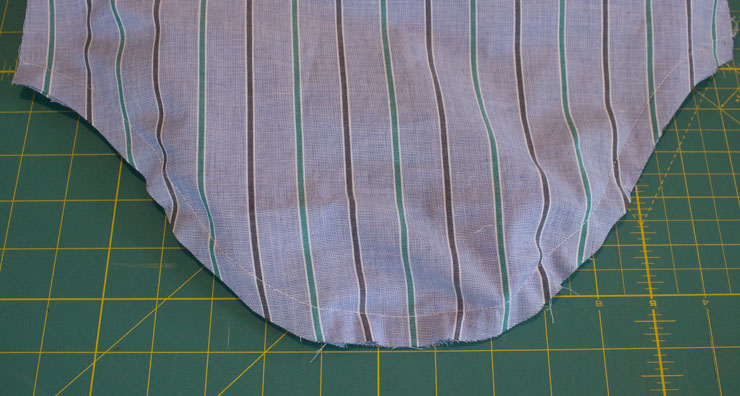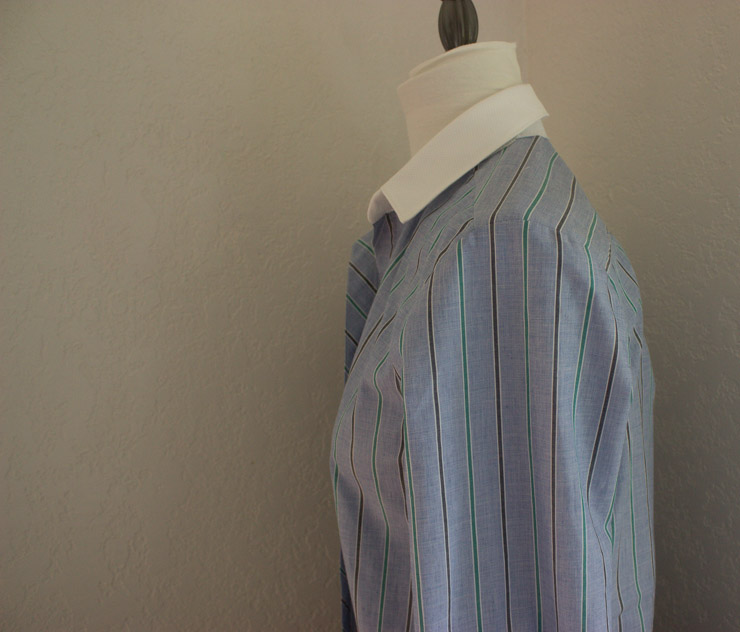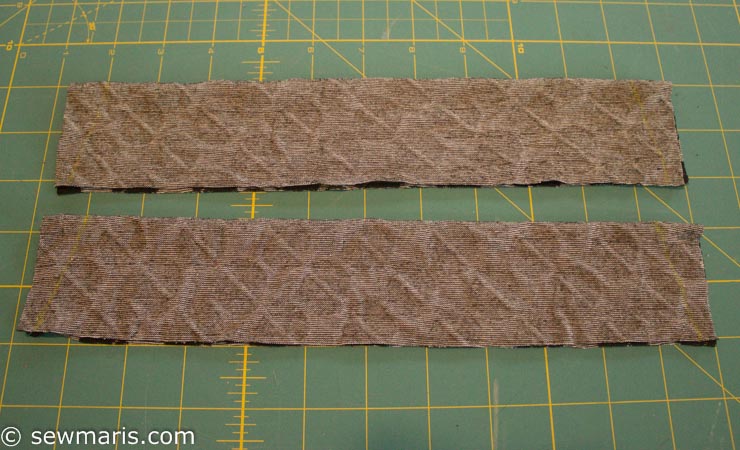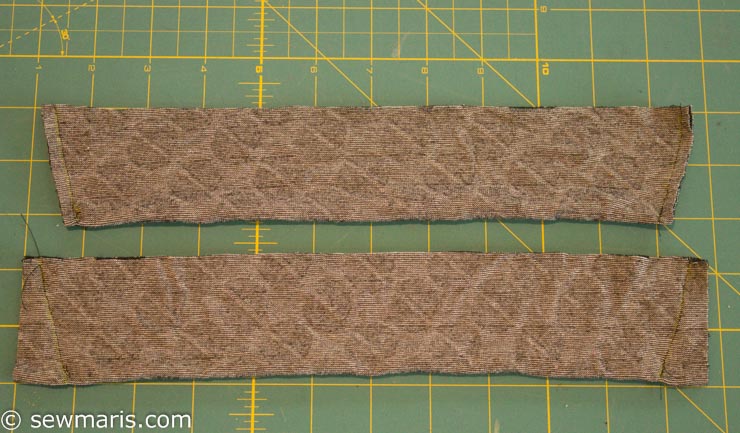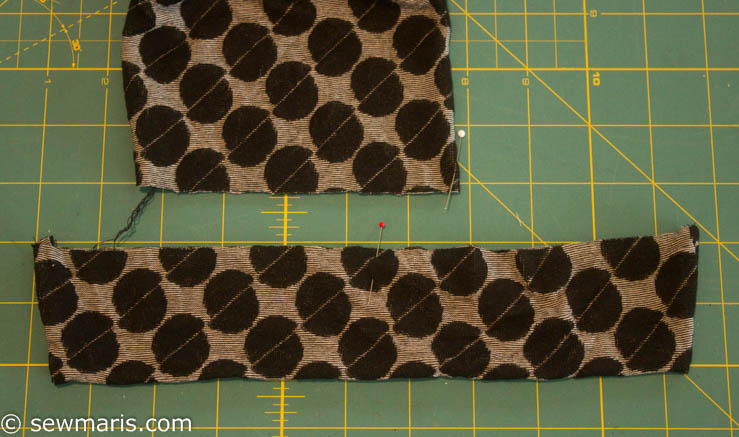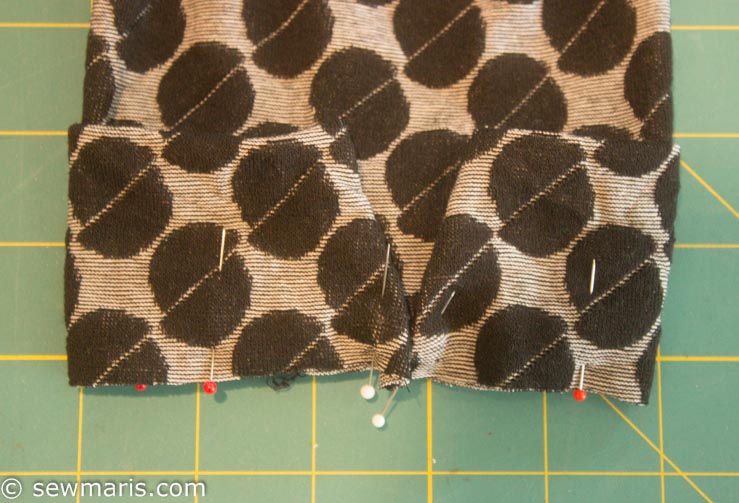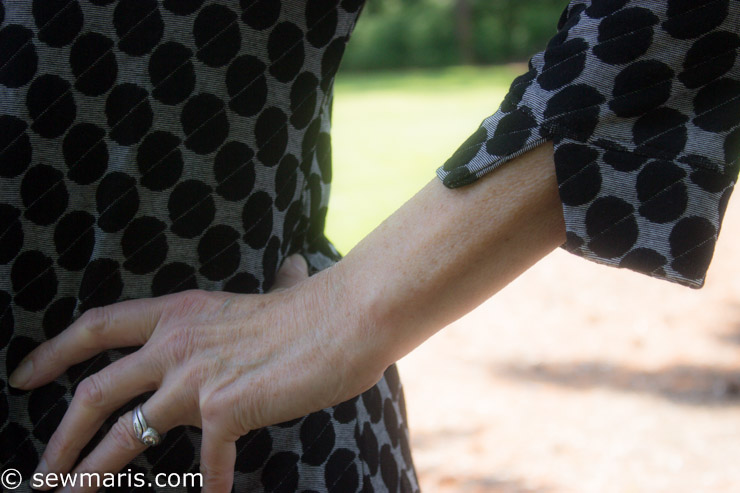Buttonholes can induce a little anxiety, especially if you have to make ten or twelve of them on a shirt. But if you follow these simple steps, and practice, you will soon be making lovely buttonholes without batting an eyelash. Really!
Please note: This post contains affiliate links and I will be compensated if you decide to purchase. Thanks!
Here’s what you need to get started:
- A garment with appropriate interfacing applied to the area where buttonholes will be made
- Sewing machine with buttonhole foot
- Thread
- Water soluble stabilizer (like Solvy)
- Marking tool (I like the Frxion pens for this job)
- Optional: Simflex buttonhole marking tool
- Optional: Fray-check
How to Make a Buttonhole
1. Using the pattern guide or a Simflex marking tool, mark the placement for your buttonholes on your garment. In the example above, the buttonholes are vertical, so I marked a horizontal line where the buttonhole needs to start, and a vertical line to keep my stitching correctly centered on the shirt front.
Hint: If your sewing machine automatically stitches the correct buttonhole length like mine does, you will only have to mark the starting placement line for the buttonhole,and the machine will determine the . correct ending point.
2. Select the buttonhole stitch on your sewing machine.
Hint: If you increase the stitch length slightly your finished buttonholes will look more ready-to-wear (RTW).
3. Cut two strips or enough rectangles of Solvy to place on top and underneath each buttonhole marking. (Make a “sandwich” of Solvy-garment-Solvy.)
4. Align your garment under the buttonhole foot so the needle is at the beginning of the buttonhole mark, and stitch the buttonhole. Well, the machine does this part.;-)
5. Repeat until all your buttonholes are completed. That wasn’t so bad, was it?
6. Gently tear off the excess Solvy around the buttonholes, and place a “line” of Fray-check in between the 2 rows of zig-zag stiching of each buttonhole. Let dry.
7. Cut open each buttonhole. That’s it! Not so bad, especially with today’s modern sewing machines that really help simplify this task.
Hint: My preferred method of cutting through the garment is to use a Japanese 15 mm buttonhole cutter as shown above. The knife edge is both very sharp and very thin, so you are much less likely to cut into your stitches. You can also use a seam ripper to open a little hole in the buttonhole and finish cutting with a pair of sharp scissors, or you can fold the buttonhole in half and snip a hole with sharp scissors, too. Regardless of which technique you use, BE CAREFUL! If you cut through your stitches it is possible to “re-stitch” , but your buttonhole will look a little sad. 🙁
I hope this tute helps you make purrrr-fect buttonholes on your next garment. It really is just a series of little things that add up to making a better buttonhole. Be sure to practice on scraps before you tackle the “real” garment.
Happy sewing!
Maris


